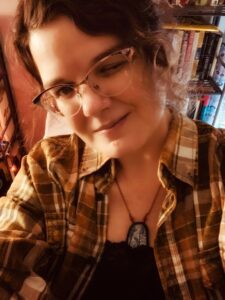The pieces by Douglass, Malcolm X, and Jiang are all education narratives. They all included the telling of a personal story of the author. What the pieces have in common is the theme of discovery of knowledge, specifically the discovery of knowledge that was “forbidden” and “restricted” to the author. In “The Memory of My Grandmother” by Anita Jiang, her interest in the picture of the Mona Lisa in her parents room points to this. She recounts the effects of the cultural revolution going on at the time, with books being burned, the imprisoning of her uncle because of the texts he published, and the belief that education was called a sin. Because of this, there’s an implied reasoning that her grandmother stayed with her because of her lack of knowledge about the world. So, when they both found the painting in her parents room, they were interested in what was outside of their knowledge. They would ask questions about the painting and ponder over the decisions the artist made. She remembers recounting the image with her grandmother, the two always speculating about the image and what information it held despite knowing nothing about it. She, now later in life, could look at the piece and appreciate its significance to her.
In “Narrative of the Life of Frederick Douglass, An American Slave” by Frederick Douglass, the author describes learning how to read and write and the struggle he had in doing so. He and many others were restricted from being taught even on the most basic level. How he eventually learned to do those things were through secretive methods, and months of hard work. Some ways he was firstly learning was at a ship yard, reading the letters marked on timber by the ship carpenters. Then, he also described learning letters by betting with little boys about how much they knew to learn more. Afterwards, he studied books that his former master wrote, and started copying down the penmanship from them. By doing this, as well as studying the letters in every way he thought to, he finally learned how to read and write which eventually led him to writing his book to document his experience.
In “Learning to Read” by Malcolm X, he writes about his experience educating himself and discovering the knowledge of the history of black people. For example, when he was first discovering how to articulate words, he studied and copied the dictionary, which helped him learn how to improve his writing. He’d copy the words multiple times, trying to study their meanings. Eventually he’d move onto texts that expanded his world view. He talks about his countless hours in the library reading about the history of people of color, as well as recommending several books on the topic to read. Without his time in prison the extent of his knowledge would have been very limited and not as broad. This start that he had of studying these texts and getting to really understand them changed his world view into becoming an activist figure.





Leave a Reply